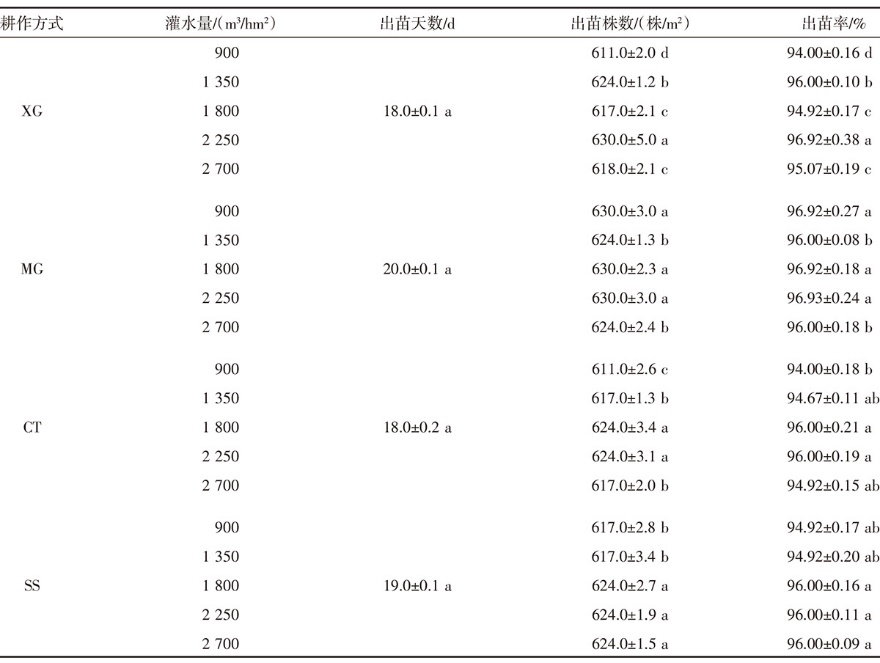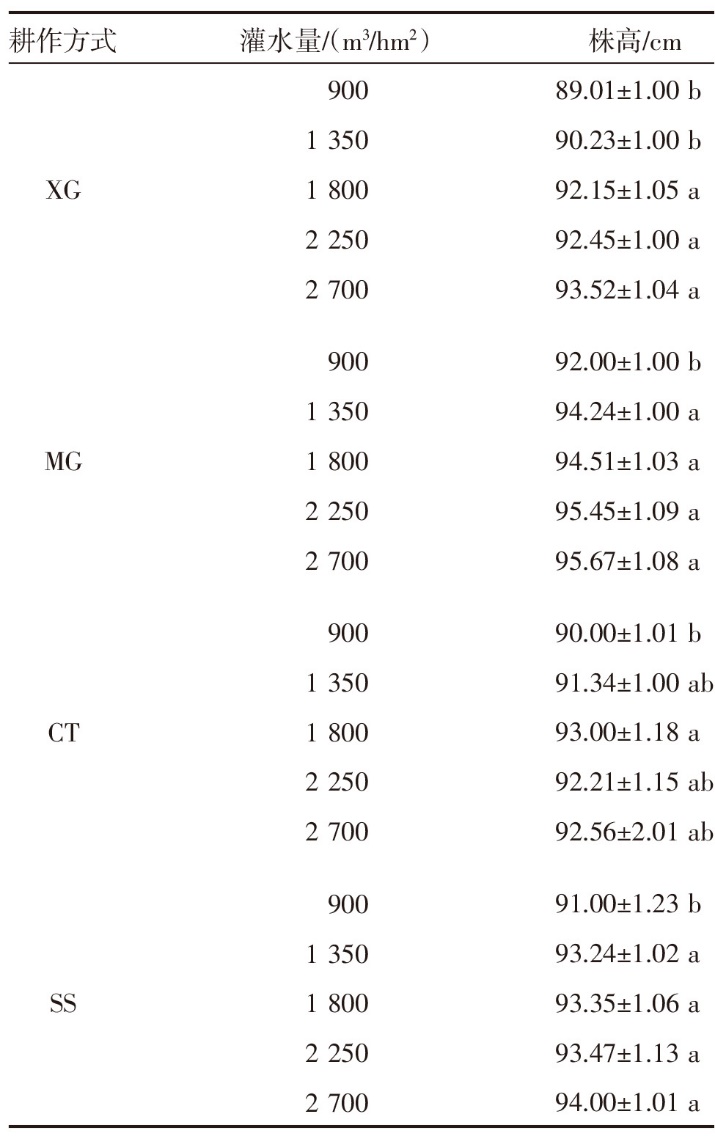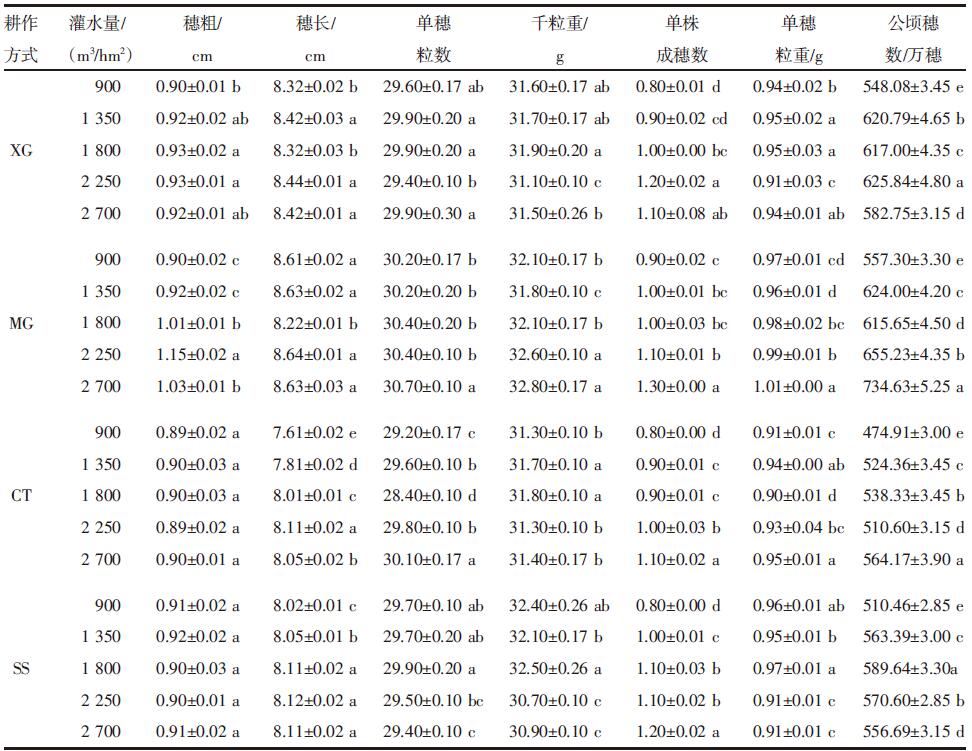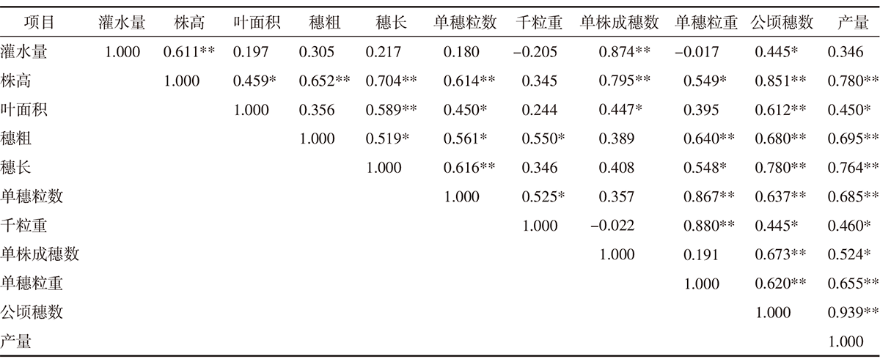北方农业学报 ›› 2022, Vol. 50 ›› Issue (6): 1-9.doi: 10.12190/j.issn.2096-1197.2022.06.01
• 作物栽培·生理生化 • 下一篇
耕作方式和灌水量对小麦生长发育及产量的影响
郑美1,2, 且天真1,2, 路战远1,3, 那顺勿日图4, 李娟1,2, 张向前3, 程玉臣3, 张德健1,2
- 1.内蒙古大学 生命科学学院,内蒙古 呼和浩特 010070
2.牧草与特色作物生物技术教育部重点实验室,内蒙古 呼和浩特 010070
3.内蒙古自治区农牧业科学院,内蒙古 呼和浩特 010031
4.通辽市林业局有害生物防治站,内蒙古 通辽 028000
Effects of tillage practices and irrigation amount on the growth,development and yield of wheat
ZHENG Mei1,2, QIE Tianzhen1,2, LU Zhanyuan1,3, Nashunwuritu 4, LI Juan1,2, ZHANG Xiangqian3, CHENG Yuchen3, ZHANG Dejian1,2
- 1. School of Life Science,Inner Mongolia University,Hohhot 010070,China
2. Key Laboratory of Forage and Characteristic Crop Biotechnology,Ministry of Education,Hohhot 010070,China
3. Inner Mongolia Academy of Agricultural and Animal Husbandry Sciences,Hohhot 010031,China
4. Pest Control Station of Tongliao Forestry Bureau,Tongliao 028000,China
摘要:
【目的】探究耕作方式、灌水量及其互作对小麦生长发育和产量的影响。【方法】在内蒙古赤峰市,选取耕作方式和灌水量两个因素,耕作方式设置旋耕秸秆还田常规播种(XG)、秸秆还田免耕播种(MG)、传统翻耕播种(CT)、深松秸秆还田播种(SS)4种方式,灌水量设置900、1 350、1 800、2 250、2 700 m3/hm2 5个水平,测定小麦出苗率、株高、叶面积指数、产量性状及籽粒产量等指标,并对各指标的相互关系进行分析。【结果】MG耕作方式下小麦出苗率最高,平均出苗率为96.55%。除CT外,XG、MG、SS耕作方式下小麦成熟期株高均随着灌水量的增加逐渐增高,最高值分别为93.52、95.67、94.00 cm。不同耕作方式对小麦叶面积指数均有影响,不同灌水量处理小麦叶面积指数差异显著(P<0.05)。不同耕作方式下5个灌水量水平对小麦生长发育影响有差异,MG耕作方式下小麦产量高于其他耕作方式,且差异显著(P<0.05);灌水量2 700 m3/hm2处理的产量最高,达到8 152.63 kg/hm2,其次是灌水量2 250 m3/hm2处理,产量为6 493.55 kg/hm2。【结论】赤峰市的小麦种植可以采用秸秆还田免耕播种,结合灌水量1 350~2 250 m3/hm2,可达到节水和有效提高产量的目的。
中图分类号:
- S512














